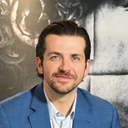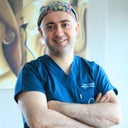Hello. Great question. There is a lot to be said to answer this properly, but will try to give you the high points. As we age the support structures of the nose weaken and the skin thins out, revealing more of the underlying structure and accentuating certain features, so it’s normal to feel this way. Medium- thick skin is fine, and from the picture I would guess more medium thickness as I can see a glimmer of shape of the underlying cartilages through the skin. You tip fullness is not from thick skin but more from the shape, convex curvature, and orientation of the lower lateral cartilages. The first part of a successful rhinoplasty is a good thorough consultation, where you collaborate with the surgeon on your ideal outcome. I find this takes at least 30 minutes and computer morphed imaging is extreme helpful. This allows you and the surgeon to communicate efficiently and for you to see what is possible with your specific nose, as well as how it looks on your face.So although it would not be adequate for me to simply answer what I would do for your nose and how, hopefully I can give you some good information to set you down the right path. As mentioned, consultation with morphing is very important (in person or virtual). Go to at least 2 -3 different consultations with true rhinoplasty surgeons, this will allow you not only to compare notes but also to learn about the surgery. Some things I hear from revision patients are “I rushed into it”, “I didn’t do my research”, “I just did it along with my body work” etc ….Don’t get lured by gimmicks. Rhinoplasty and cosmetic surgery has become marketed much like everything else in our lives, but the consequences are bigger than simply choosing a trendy brand that is not “as advertised”. The thing I have seen highly marketed is the “different techniques”…. Scarless, incision-less, closed, preservation, ultrasonic, etc …. They’re all general approaches to the nose, they are all surgery, they all have risks … plus the first three are the same thing and the last one is not a technique but a tool that is used to cut the bones. It’s the surgeon that is giving you the results and safety, not the approach / technique. What matters is that there is clear communication btwn you and surgeon, that the surgeon understands your anatomy and how it has to be changed to achieve your desired results, and that the surgeon has a wide array of maneuvers / techniques (diff from overall “techniques”) to be able to address your specific anatomy. Also that the surgeon will give you their best effort. Rhinoplasty is a difficult surgery because it’s like a puzzle that we solve every time we operate. We assess and go in with a plan, but we must also have the ability to change that plan if need be, and to even do the same maneuvers slightly differently in order to achieve happy results. I hope this information helps you find the right surgeon and achieve the desired results. Keep reading on rhinoplasty from reputable sites. Do several consultations, they are well worth the consultation fees as they will give you useful information. Don’t settle for a simple “yes, we can give you the nose of your dreams with fastest recovery because we use a “special technique”.Lastly, if I had to answer based on these pictures: dorsal reduction, spreader grafts or flaps, minor deprojection, small amount rotation, lateral crural grafting to correct convexity and crural repositioning to help orientation in order to reduce the bulbous tip while avoiding pinching of the side and supporting the nostrils, columellar support with a strut graft or septal extension, alar rim grafts, and possibly an alar reduction. Good luck!






